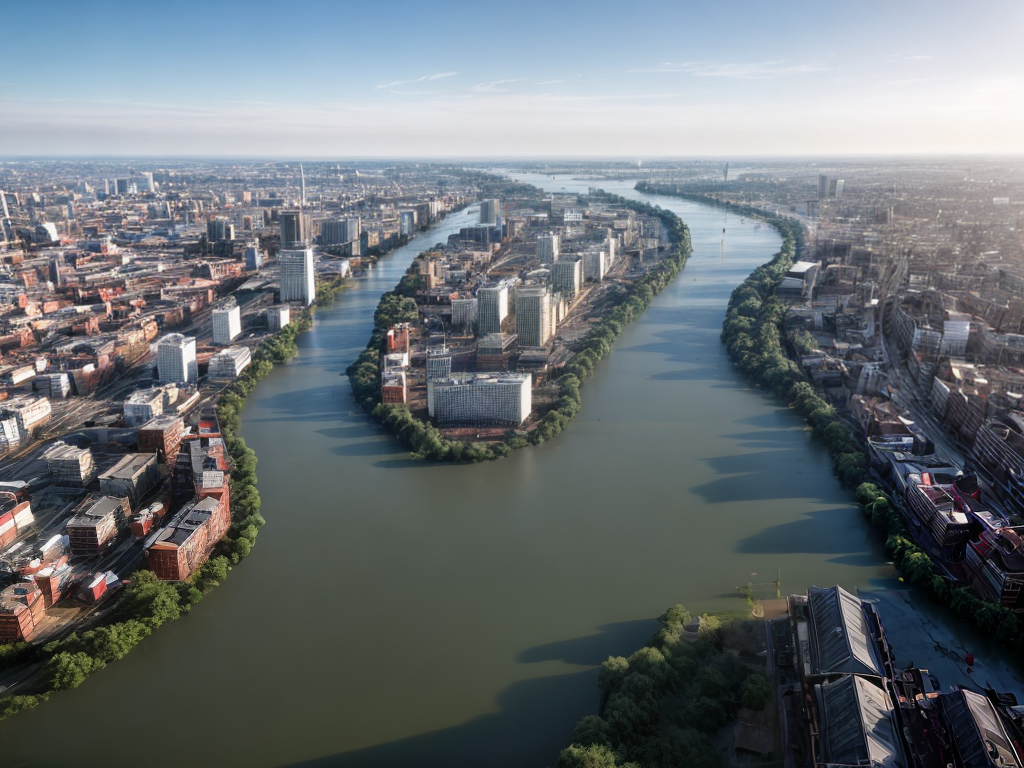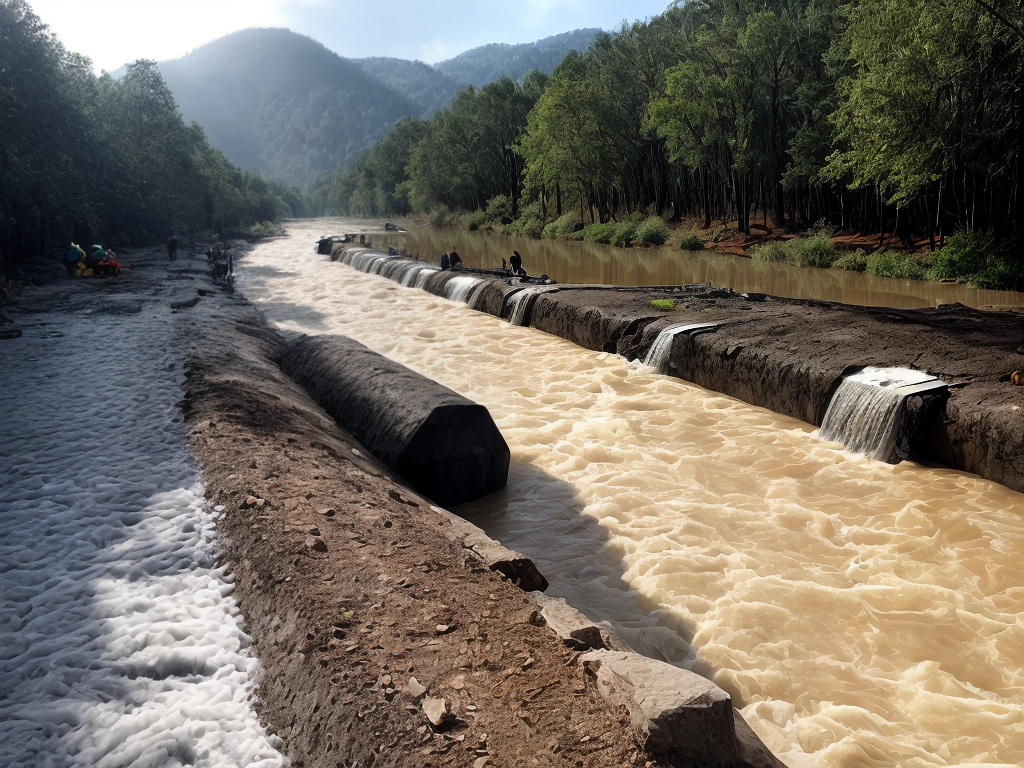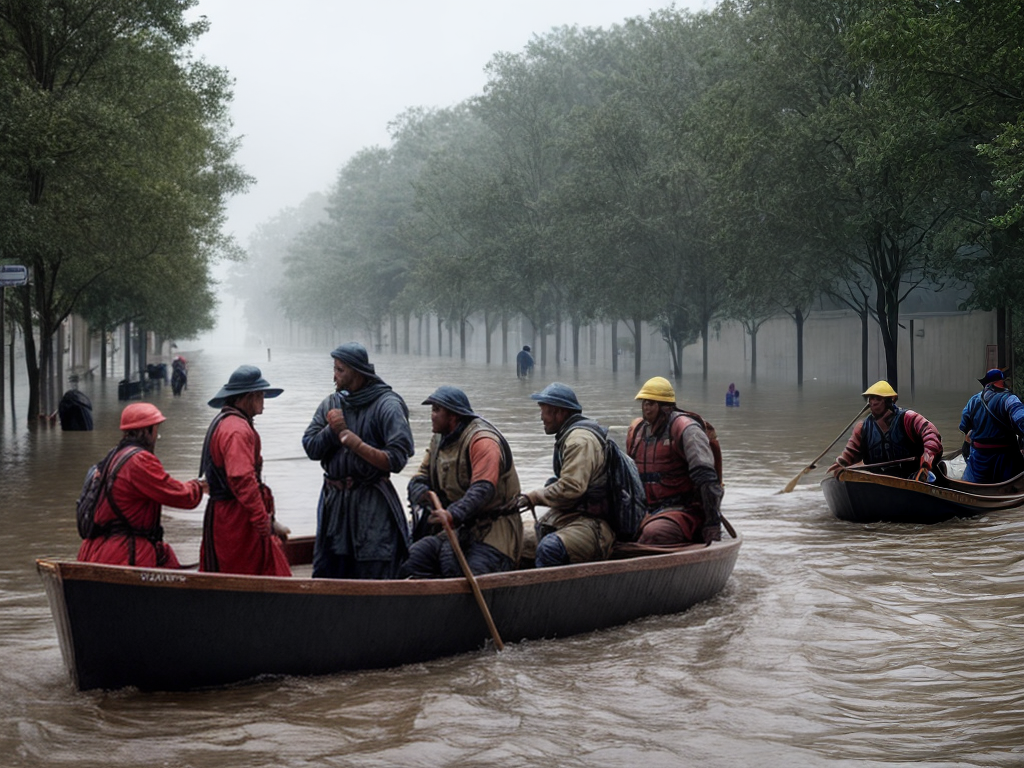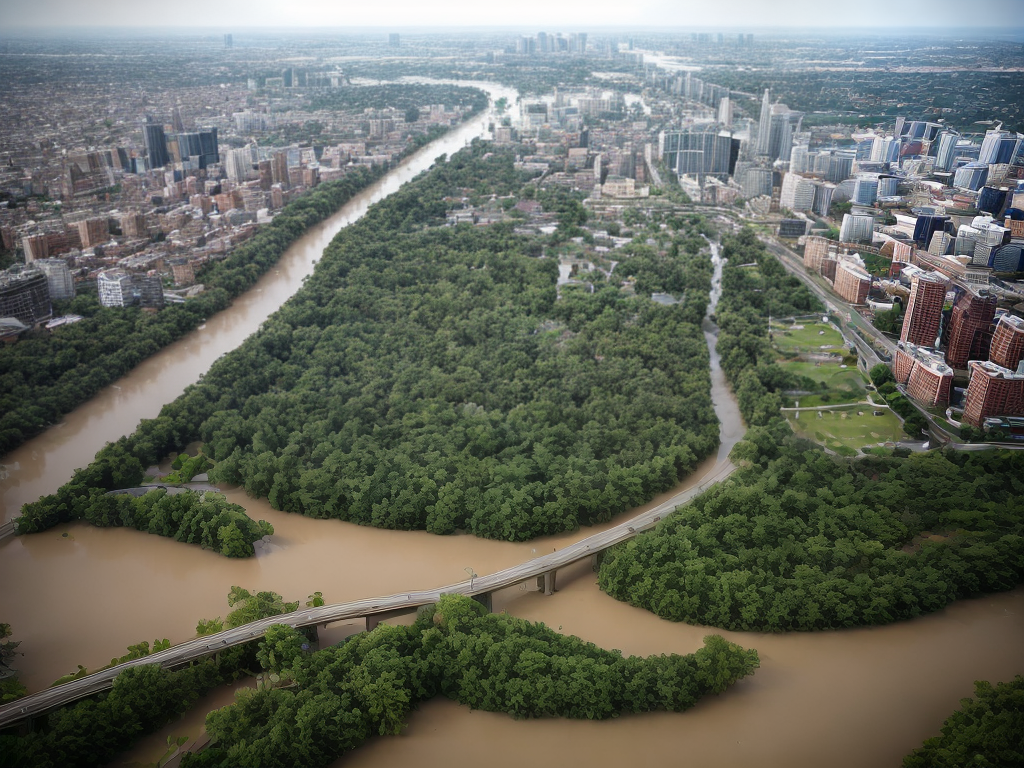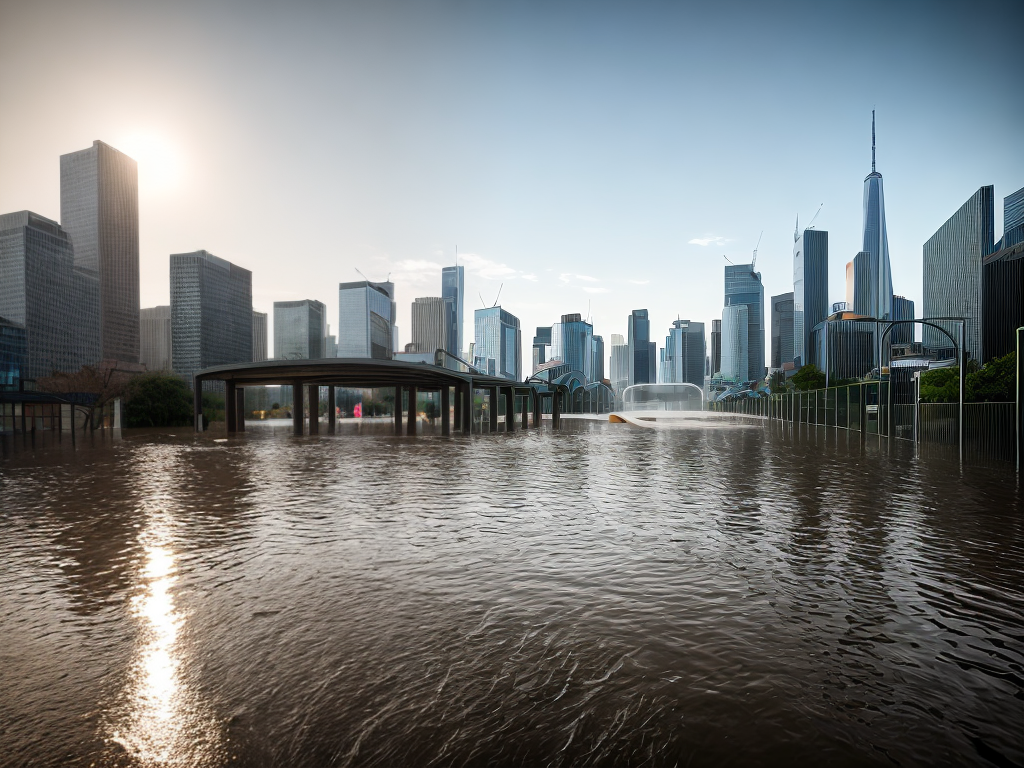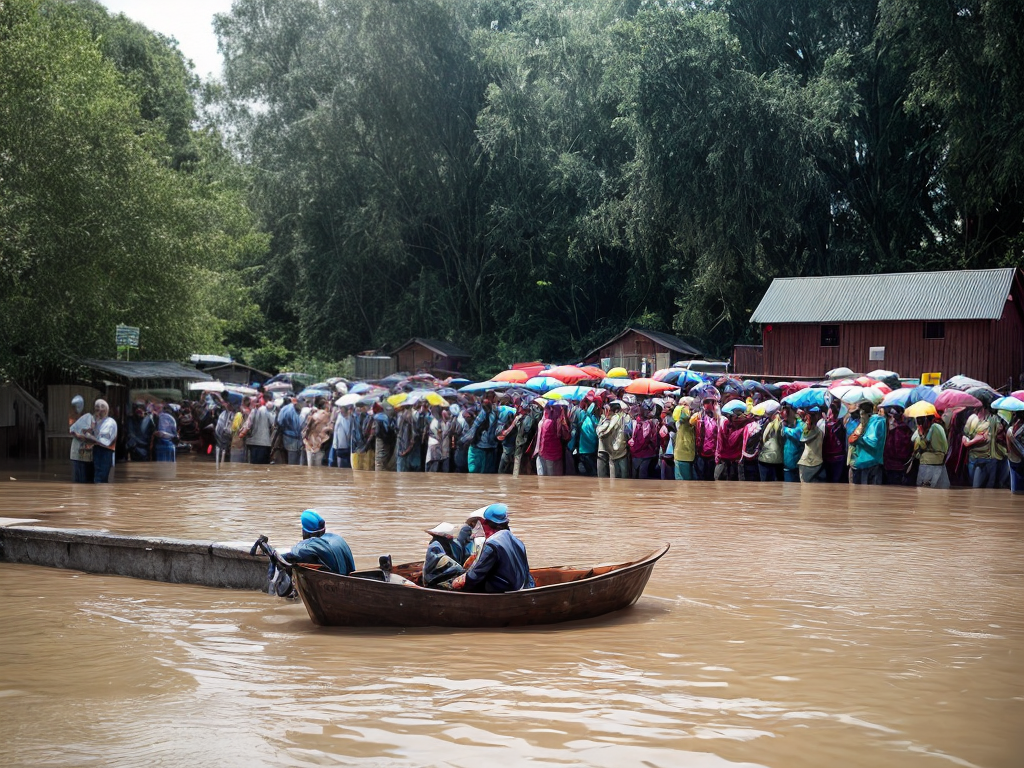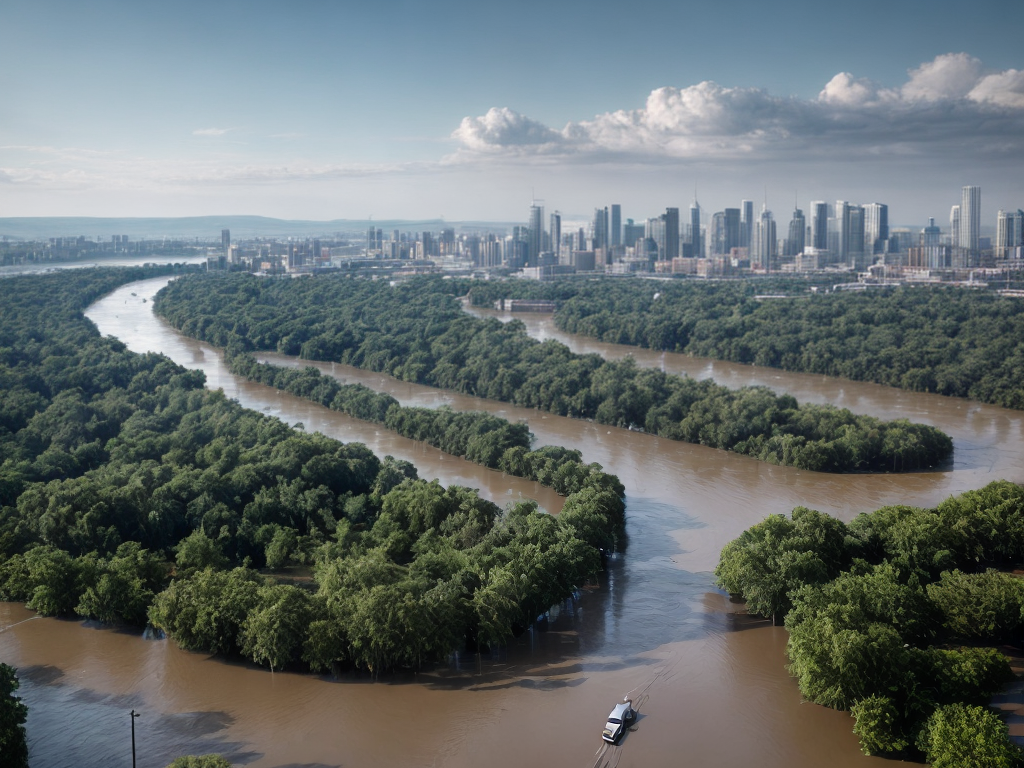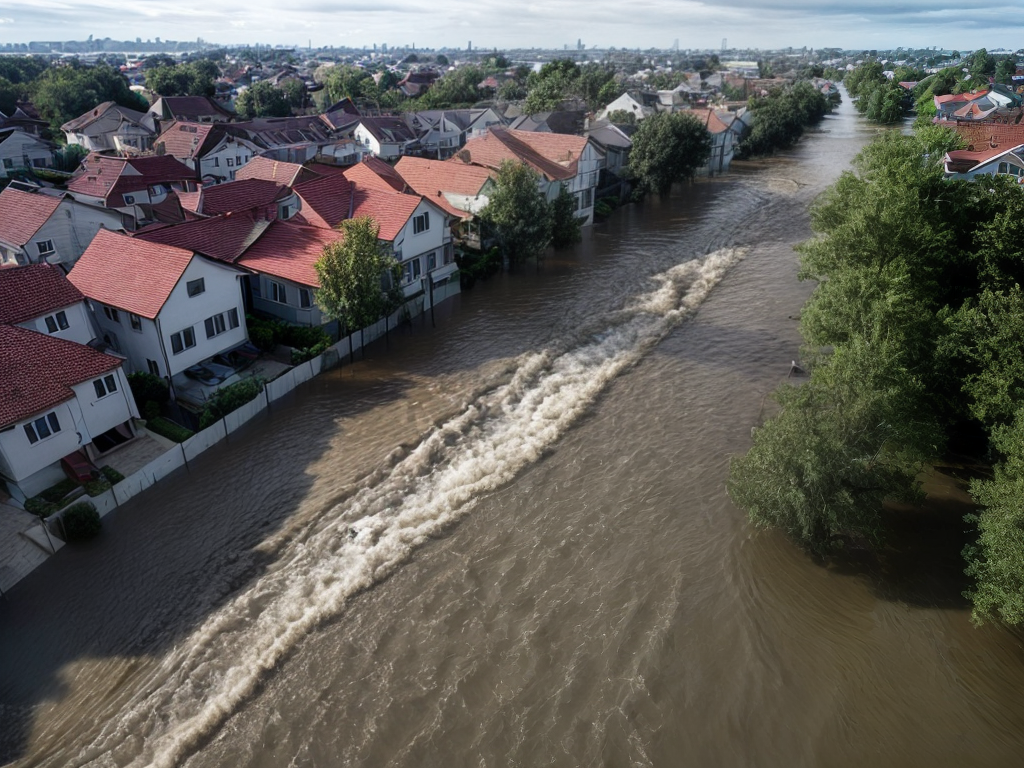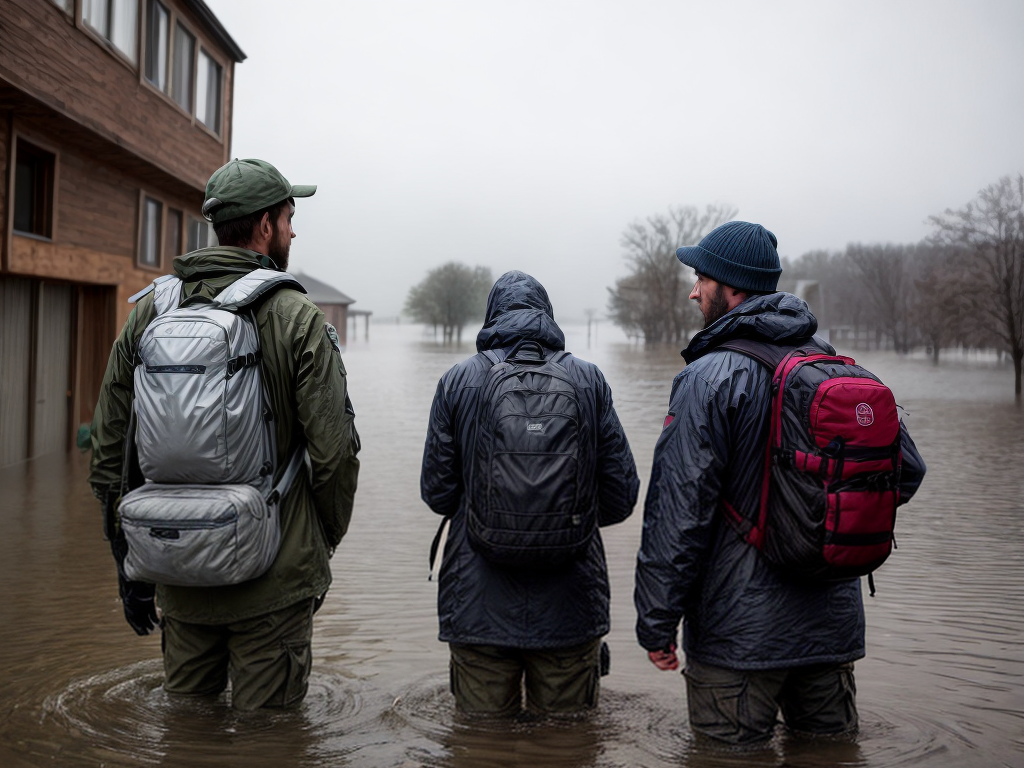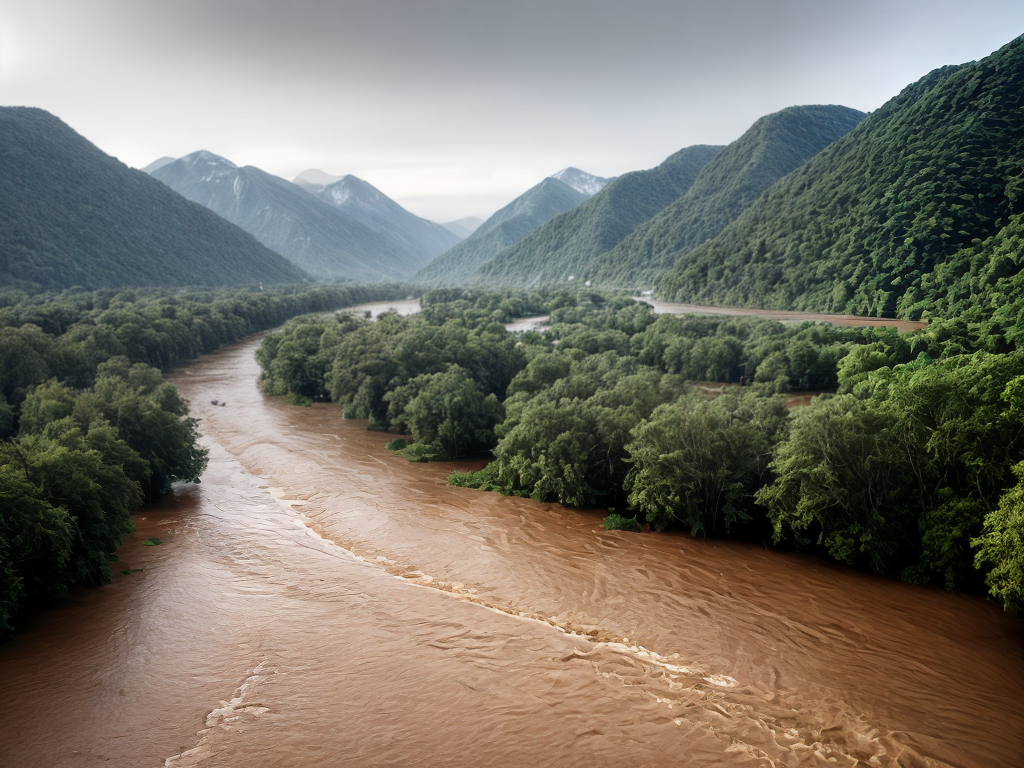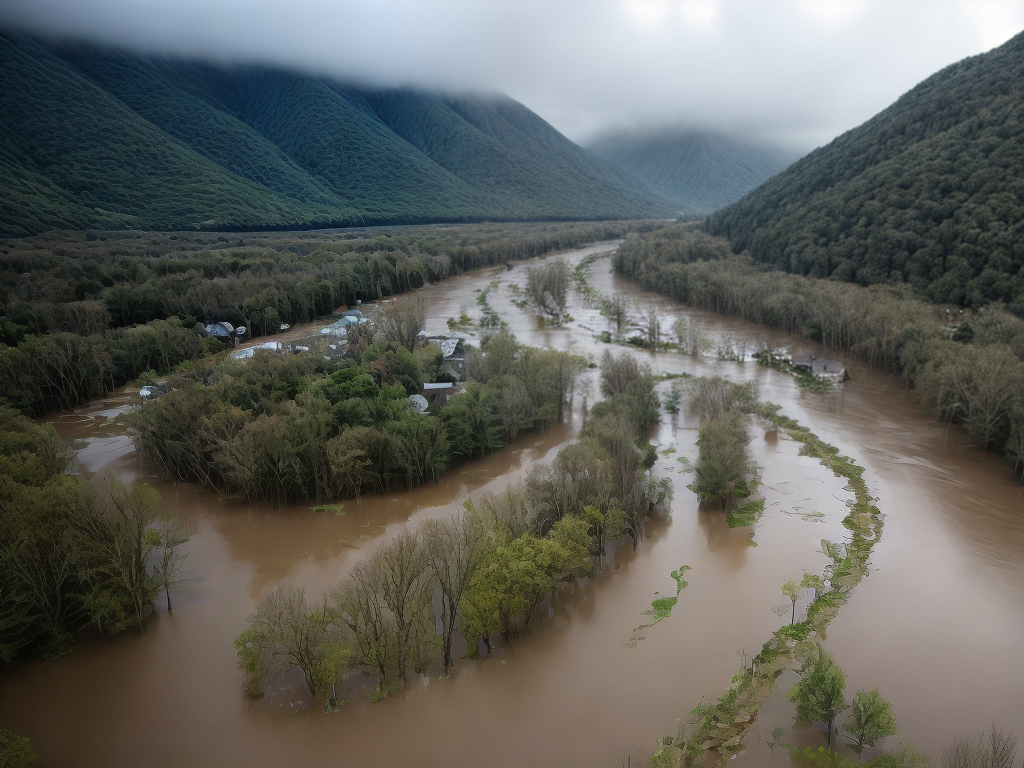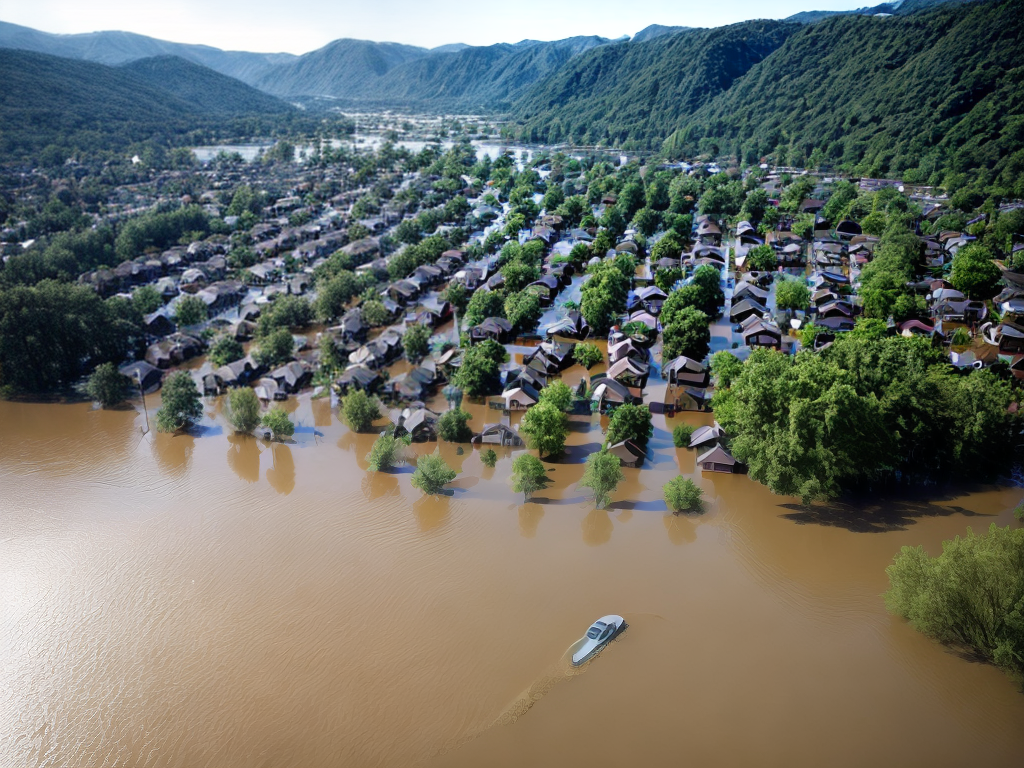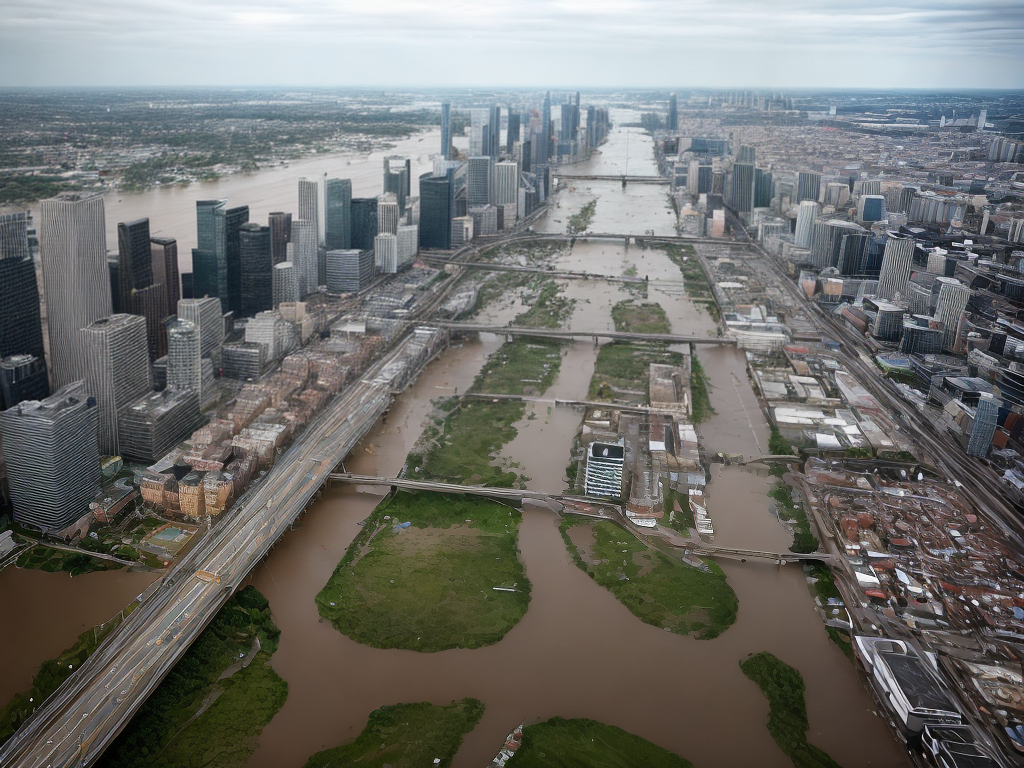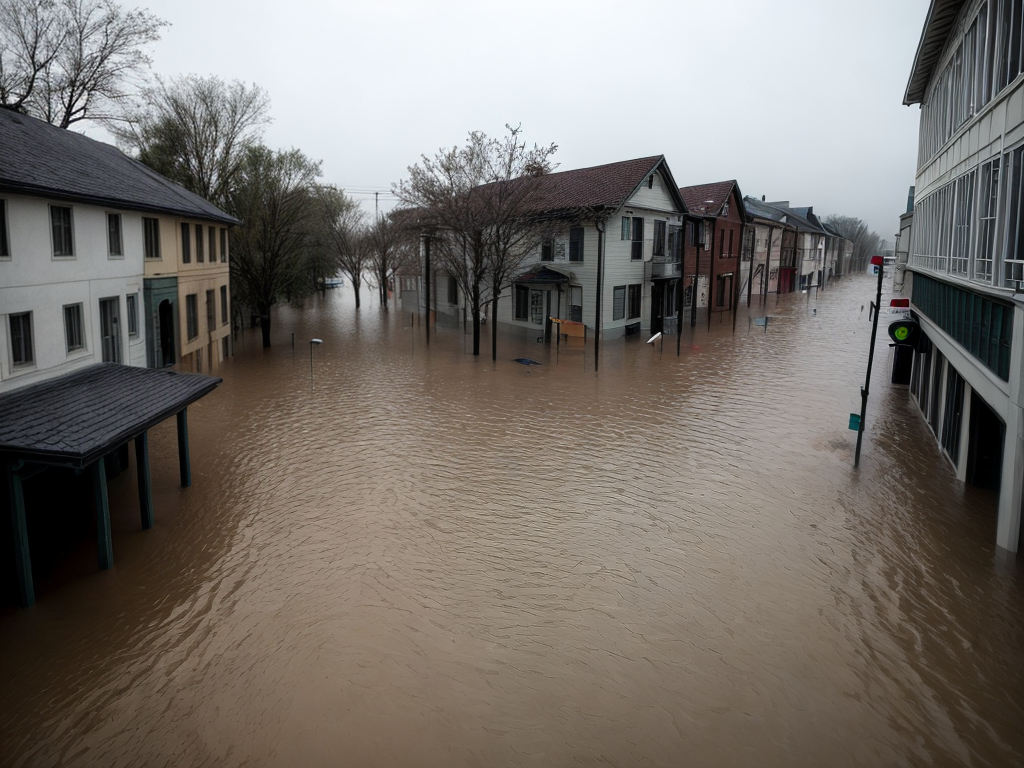
When it comes to the devastating impact of climate change on our planet, one case study that immediately comes to mind is the floods in Bangladesh. The frequency and severity of these floods have increased significantly in recent years, leaving millions of people displaced and facing unimaginable hardships. However, this is just the tip of the iceberg. As we delve deeper into the issue, we discover a multitude of other case studies from around the world, each showcasing how climate change is exacerbating floods and posing a grave threat to vulnerable communities. From Hurricane Harvey in the United States to cyclones in Zimbabwe and typhoons in the Philippines, the consequences of climate change are clear, and there is much more to uncover.
Key Takeaways
- Climate change is intensifying flood events worldwide, leading to devastating impacts on vulnerable communities and infrastructure.
- Adaptation measures, such as early warning systems, community-based initiatives, and innovative engineering techniques, are crucial in mitigating the effects of floods and building resilience.
- Rising sea levels and changing river patterns are exacerbating flooding and coastal erosion, displacing communities and causing social-economic disruptions.
- Proactive measures, collaboration among stakeholders, and government response are essential in addressing the challenges posed by climate change-induced floods and ensuring the long-term sustainability of affected regions.
Floods in Bangladesh
Floods in Bangladesh pose a significant threat to the country’s infrastructure, economy, and population. As an innovative audience, we must explore adaptation measures and community resilience to address this issue. Bangladesh, a country located in the delta region of three major rivers, is highly vulnerable to flooding due to its geographical location and climate change impacts.
To combat the recurring floods, Bangladesh has implemented various adaptation measures. One of the key strategies is the construction of embankments and flood shelters. These embankments act as barriers against floodwaters, protecting vital infrastructure such as roads, bridges, and buildings. Flood shelters provide temporary refuge for affected communities during extreme flooding events, ensuring their safety and well-being. Additionally, the government has invested in early warning systems and disaster management plans, enabling timely evacuation and reducing flood-related casualties.
Community resilience plays a crucial role in mitigating the impacts of floods in Bangladesh. Local communities have been actively involved in developing innovative solutions to adapt to the changing climate. For instance, they have embraced climate-smart agriculture practices, such as floating gardens and raised bed farming, which protect crops from floodwaters. These practices not only ensure food security but also provide income opportunities for vulnerable communities. Furthermore, community-based organizations have been established to strengthen social cohesion and enhance disaster preparedness at the grassroots level.
Hurricane Harvey in the United States
During the devastating impact of Hurricane Harvey, the United States experienced widespread destruction and flooding. The hurricane made landfall in Texas on August 25, 2017, causing unprecedented amounts of rainfall and resulting in catastrophic flooding in Houston and other parts of southeastern Texas. The devastating effects of the hurricane were felt not only in terms of lives lost and homes destroyed but also in terms of its impact on the economy and community resilience.
The economic impact of Hurricane Harvey was staggering. According to a study conducted by the National Oceanic and Atmospheric Administration (NOAA), the total cost of the hurricane reached an estimated $125 billion, making it one of the costliest natural disasters in U.S. history. The destruction of infrastructure, businesses, and homes had a significant impact on local and regional economies, leading to job losses and a decline in economic growth.
Community resilience, or the ability of a community to recover and adapt after a disaster, was put to the test during Hurricane Harvey. The affected communities showed remarkable strength and unity in the face of adversity. Volunteers and first responders worked tirelessly to rescue people stranded by the floodwaters and provide them with essential supplies and support. Local organizations and community leaders played a crucial role in coordinating relief efforts and rebuilding initiatives.
To paint a clearer picture of the impact of Hurricane Harvey, let’s take a look at the following table:
| Aspect | Impact |
|---|---|
| Economic | $125 billion in total cost |
| Job losses and decline in economic growth | |
| Community Resilience | Unity and strength shown by affected communities |
| Remarkable efforts by volunteers and first responders | |
| Local organizations leading relief and rebuilding initiatives |
Hurricane Harvey was a stark reminder of the increasing severity and frequency of extreme weather events due to climate change. It highlighted the urgent need for innovative solutions and proactive measures to mitigate the impact of such disasters on both the economy and community resilience.
Flooding in Venice, Italy
The city of Venice, Italy, has been severely affected by recurrent and destructive flooding events. These floods, known as “aqua alta” or high water, have been a longstanding challenge for the city due to its unique geographic location and sinking land. However, the impacts of climate change have exacerbated the frequency and intensity of these floods, posing a significant threat to the city’s cultural heritage and economy.
- Venice’s flood barriers: In response to the increasing flood risk, Venice has implemented innovative flood barrier systems to protect the city. The most notable is the MOSE project, which consists of mobile barriers that can be raised during high tides to prevent the inflow of water into the lagoon. These barriers use an innovative hydraulic system and are designed to withstand rising sea levels caused by climate change.
- Climate change adaptation measures in Venice: Recognizing the urgent need to adapt to climate change, Venice has implemented a range of measures to mitigate the impact of flooding. These include the elevation of pedestrian walkways and the restoration of historic buildings using flood-resistant materials. Additionally, the city is investing in advanced monitoring systems to improve flood forecasting and emergency response.
- Collaborative research and innovation: Venice has become a hub for interdisciplinary research and innovation, bringing together scientists, engineers, and architects to develop sustainable solutions for flood mitigation. This collaborative approach fosters the exchange of knowledge and expertise, leading to the development of cutting-edge technologies and strategies to adapt to climate change.
Venice’s efforts to address the challenges of flooding demonstrate the city’s commitment to innovation and resilience. By combining technological advancements, climate change adaptation measures, and collaborative research, Venice is paving the way for other flood-prone cities around the world to develop innovative solutions and protect their cultural heritage in the face of a changing climate.
Monsoon Floods in India
India experiences devastating monsoon floods every year, causing widespread destruction and loss of life. These floods have a significant impact on agriculture and result in changing river patterns. The effects of climate change are exacerbating these already severe floods, making it crucial for us to find innovative solutions to mitigate their impact.
The monsoon floods in India have a devastating effect on the agricultural sector, which is the backbone of the country’s economy. Excessive rainfall leads to crop damage, soil erosion, and the destruction of irrigation systems. This not only affects the livelihoods of millions of farmers but also disrupts the food supply chain, leading to food shortages and price hikes. Innovative approaches, such as the development of flood-resistant crop varieties and improved water management techniques, are essential to ensure food security and sustainable agriculture in the face of these extreme weather events.
Furthermore, monsoon floods in India also result in changing river patterns. The excessive amount of rainfall causes rivers to overflow, leading to the erosion of riverbanks and the formation of new channels. This alters the course of rivers, affecting transportation, infrastructure, and the availability of water resources. To address this challenge, innovative engineering techniques, such as the construction of flood control structures and the implementation of riverbank stabilization measures, can help manage the changing river patterns and minimize the damage caused by floods.
Typhoon Haiyan in the Philippines
Typhoon Haiyan wreaked havoc in the Philippines, leaving behind a trail of destruction and loss. This devastating typhoon served as a wake-up call for the need to enhance typhoon preparedness and disaster response in the country. The Philippines, being located in the Pacific Ring of Fire, is highly prone to typhoons and other natural disasters. To address this challenge, innovative approaches have been adopted to mitigate the impacts of future typhoons and improve disaster response capabilities.
- Early warning systems: The implementation of advanced meteorological technologies has significantly improved the accuracy and timeliness of typhoon forecasts. This enables authorities to issue early warnings, giving people ample time to prepare and evacuate if necessary. Innovative technologies, such as satellite imagery and computer modeling, have played a crucial role in enhancing the effectiveness of these warning systems.
- Community-based preparedness: Recognizing the importance of community involvement in disaster preparedness, local governments have pioneered innovative initiatives. These include training programs that equip communities with essential skills and knowledge to respond effectively during typhoons. Additionally, community-based early warning systems have been established, empowering individuals to take proactive measures to protect themselves and their neighbors.
- Resilient infrastructure: In response to the devastation caused by Typhoon Haiyan, there has been a shift towards building more resilient infrastructure. Innovative engineering designs and construction techniques are being employed to ensure that critical infrastructure, such as hospitals, schools, and evacuation centers, can withstand the powerful forces of a typhoon. This approach not only reduces the risk to human life but also minimizes the economic losses associated with infrastructure damage.
The lessons learned from Typhoon Haiyan have sparked a renewed focus on typhoon preparedness and disaster response in the Philippines. Through innovative strategies and technologies, the country is striving to minimize the impact of future typhoons and protect the lives and livelihoods of its people.
Flash Floods in Brazil
After witnessing the devastating impact of Typhoon Haiyan in the Philippines, it is important to examine the occurrence of flash floods in Brazil. Flash floods, characterized by their rapid onset and high intensity, pose a significant threat to both rural and urban areas in the country. These floods are particularly concerning due to their impact on urbanization and the consequences of deforestation.
In recent years, Brazil has experienced an increase in flash floods, which can be attributed to climate change. Rising global temperatures have led to more frequent and intense rainfall events, overwhelming drainage systems and causing water levels to rise rapidly. This poses a serious risk to urban areas, where infrastructure may not be adequately designed to handle such extreme conditions.
Furthermore, deforestation has exacerbated the consequences of flash floods in Brazil. The destruction of forests, particularly in the Amazon region, has resulted in reduced water absorption and increased soil erosion. This means that when heavy rains occur, the water cannot be absorbed by the ground, leading to increased runoff and higher flood peaks. The consequences of deforestation are not only limited to the immediate flood event but also impact the long-term stability of the affected areas.
To address the impact of flash floods on urbanization and the consequences of deforestation in Brazil, innovative solutions are needed. These may include the implementation of sustainable urban drainage systems, the use of green infrastructure to increase water absorption, and the promotion of reforestation efforts to restore the natural water retention capacity of the land. By embracing innovative approaches, Brazil can better prepare for and mitigate the devastating effects of flash floods, ensuring the safety and resilience of its communities.
Flooding in Jakarta, Indonesia
Flooding in Jakarta, Indonesia poses a significant threat to the city’s infrastructure and residents due to its frequency and intensity. The impact on urbanization is immense, as the increasing floods disrupt the development and expansion of the city. The government response to this issue has been crucial in addressing the challenges and finding innovative solutions.
- Urban planning: The government is actively working on improving urban planning strategies to mitigate the effects of flooding. By incorporating climate change considerations into city planning, they aim to create a more resilient infrastructure that can withstand rising water levels. This includes implementing green spaces, building flood-resistant structures, and improving drainage systems.
- Technology innovation: To combat the escalating flood situation, the government is investing in technological advancements. They are exploring innovative solutions such as smart sensors, real-time monitoring systems, and predictive analytics to enhance flood forecasting and early warning systems. This proactive approach allows authorities to respond quickly and efficiently, minimizing the impact on residents and infrastructure.
- Collaborative partnerships: Recognizing the complexity of the issue, the government has fostered partnerships with various stakeholders. They are working closely with local communities, international organizations, and private sectors to develop comprehensive flood management strategies. Through collaboration, they can share knowledge, resources, and expertise to implement effective measures.
The government’s response to flooding in Jakarta reflects its commitment to addressing the challenges posed by climate change. By integrating innovative solutions into urban planning, investing in technology, and fostering collaboration, they are taking proactive steps toward building a more resilient and sustainable city. However, continuous efforts and adaptive strategies will be crucial in mitigating the impact of flooding and ensuring the well-being of Jakarta’s residents.
Storm Surges in the Maldives
As we explore the impact of climate change on floods, it is crucial to address the issue of storm surges in the Maldives. Rising sea levels pose a significant threat to this archipelago nation, leading to an increased vulnerability to storm surges. Along with coastal erosion, the combination of these factors further exacerbates the risk to the Maldives’ infrastructure and population.
Rising Sea Levels
The threat of rising sea levels and storm surges in the Maldives looms large over the vulnerable island nation. As a nation with a low-lying topography, the Maldives is particularly susceptible to the impacts of rising sea levels. Here are three key ways in which the rising sea levels are affecting coastal communities in the Maldives:
- Increased coastal erosion: The rising sea levels lead to more frequent and severe erosion along the coastlines, threatening the infrastructure and livelihoods of coastal communities.
- Inundation of freshwater resources: As the sea levels rise, saltwater intrusion into freshwater sources becomes a significant issue, affecting the availability of clean drinking water for coastal communities.
- Displacement of communities: The rising sea levels force coastal communities to relocate, leading to social and economic disruptions as people are uprooted from their homes and livelihoods.
These challenges necessitate innovative solutions to protect coastal communities and ensure their resilience in the face of rising sea levels.
Coastal Erosion
With the threat of rising sea levels and the impact it has on coastal communities in the Maldives, it is crucial to examine the issue of coastal erosion, specifically the effects of storm surges. As we strive for innovation in coastal management, it becomes imperative to implement effective erosion control measures. Storm surges, caused by intense tropical storms and hurricanes, pose a significant threat to the Maldives, exacerbating coastal erosion. These surges bring powerful waves that erode the shoreline, leading to the loss of valuable land and infrastructure. To address this issue, innovative coastal management strategies need to be developed and implemented. This includes the construction of barriers and artificial reefs to dissipate wave energy, as well as the promotion of natural protective features like mangroves and dunes. By prioritizing erosion control, we can safeguard the Maldives’ coastal communities and ensure their sustainable future.
Infrastructure Vulnerability
Our infrastructure in the Maldives faces significant vulnerability to storm surges, posing a threat to the stability and functionality of key systems. As climate change intensifies, the impact on urban areas is becoming more pronounced, necessitating innovative adaptation measures. Here are three key factors exacerbating infrastructure vulnerability in the face of storm surges:
- Rising sea levels: As sea levels continue to rise due to climate change, the risk of storm surges and coastal flooding increases. This puts critical infrastructure, such as roads, bridges, and utilities, at greater risk of damage and disruption.
- Limited land availability: The Maldives is a small island nation with limited land availability, making it challenging to relocate or reinforce vulnerable infrastructure. This constraint increases the urgency for innovative solutions to protect and adapt existing infrastructure.
- Economic implications: The vulnerability of infrastructure to storm surges has significant economic implications. Disruptions to key systems can lead to prolonged downtime, impacting businesses and livelihoods. Therefore, investing in innovative adaptation measures is crucial for long-term economic resilience.
Flooding in Mozambique
When it comes to flooding in Mozambique, rising sea levels and extreme precipitation events are two crucial points to consider. As climate change intensifies, the sea levels continue to rise, leaving coastal areas vulnerable to flooding. Additionally, the occurrence of extreme precipitation events, such as heavy rainfall and cyclones, increases the risk of flash floods and widespread devastation.
Rising Sea Levels
The devastating floods in Mozambique caused by rising sea levels highlight the urgent need for immediate action to address the impacts of climate change. As rising tides continue to threaten coastal areas, we must innovate and implement sustainable solutions to mitigate the risks. Here are three key considerations for addressing coastal vulnerability:
- Investing in resilient infrastructure: We must develop innovative solutions that can withstand higher sea levels and protect vulnerable coastal communities. This includes implementing flood-resistant building materials, improving drainage systems, and constructing elevated roads and buildings.
- Enhancing early warning systems: By utilizing cutting-edge technologies, such as advanced satellite imagery and data analytics, we can improve our ability to predict and respond to coastal flooding events. This will enable us to evacuate communities promptly and minimize the loss of life and property.
- Promoting ecosystem-based adaptation: Restoring and conserving coastal ecosystems, such as mangroves and coral reefs, can provide natural barriers that absorb the impact of rising tides. Investing in these ecosystems not only protects coastal areas but also supports biodiversity and enhances climate resilience.
Taking proactive measures to address rising sea levels and coastal vulnerability is essential to safeguarding our communities and fostering a sustainable future. Through innovative approaches and collaborative efforts, we can effectively adapt to the challenges posed by climate change.
Extreme Precipitation Events
Addressing the consequences of extreme precipitation events, such as the devastating flooding in Mozambique, requires immediate action and proactive measures to mitigate their impact. As climate change intensifies, extreme weather patterns are becoming more frequent and severe, leading to an increase in heavy rainfall and subsequent flooding. To effectively manage these risks, innovative approaches to urban planning are crucial. By incorporating climate resilience strategies into urban development, cities can better prepare for extreme precipitation events and minimize the resulting damage. This includes implementing green infrastructure solutions like rain gardens and permeable pavements, as well as improving stormwater management systems. Additionally, incorporating climate data and projections into urban planning can help identify flood-prone areas and inform the design of resilient infrastructure. We must embrace innovative solutions to address the challenges posed by extreme precipitation events and ensure the safety and resilience of our cities.
Heavy Rainfall in the United Kingdom
In recent years, heavy rainfall events in the United Kingdom have become more frequent and intense. This changing weather pattern has significant implications for flood prevention measures in the country. Here are three key points to consider:
- Advanced forecasting technology: With the increase in heavy rainfall events, the need for accurate and timely weather forecasts becomes even more crucial. Innovations in weather forecasting technology can help provide early warnings and enable better preparedness for potential flooding. By leveraging data analytics and machine learning algorithms, forecasters can enhance their ability to predict rainfall patterns and identify areas at high risk of flooding.
- Green infrastructure solutions: Traditional flood prevention measures such as concrete barriers and drainage systems are effective to some extent, but they are not sustainable in the long run. Innovative approaches, such as green infrastructure, offer a more sustainable and environmentally friendly solution. Green roofs, permeable pavements, and urban wetlands are examples of green infrastructure that can absorb and store excess rainfall, reducing the risk of flooding.
- Community involvement and citizen science: Engaging the community in flood prevention efforts is essential for effective and innovative solutions. Citizen science initiatives, where individuals contribute data and observations, can provide valuable insights into local weather patterns and flooding risks. By involving communities in flood prevention measures, such as creating community flood resilience plans and implementing local flood monitoring systems, we can harness the power of collective intelligence to address the challenges posed by heavy rainfall events.
Flooding in Nigeria
Flooding in Nigeria is a significant issue due to increasing rainfall intensity, which has a severe impact on the country’s infrastructure. As a result of climate change, Nigeria has experienced more frequent and intense rainfall events, leading to widespread flooding and damage to roads, bridges, and buildings. These challenges highlight the urgent need for adaptive measures and investment in resilient infrastructure to mitigate the effects of climate change and protect the Nigerian population from future flooding events.
Increasing Rainfall Intensity
With each passing year, the intensity of rainfall in Nigeria continues to rise, leading to devastating consequences for communities across the country. The impact on urbanization is significant, as heavy rainfall overwhelms drainage systems and causes flash floods in cities. This not only damages infrastructure but also disrupts daily life and poses risks to the health and safety of residents. Additionally, the effects on water resources are profound, as excessive rainfall leads to the contamination of water sources, making them unsafe for consumption. This creates a strain on the already limited access to clean water, exacerbating the challenges faced by communities. As rainfall intensity increases, innovative solutions must be developed to mitigate the impacts and protect vulnerable populations from the destructive forces of flooding.
Impact on Infrastructure
As the intensity of rainfall in Nigeria continues to rise, the impact on infrastructure becomes increasingly evident through the devastating consequences of floods. These floods have a significant impact on transportation, as roads and bridges are washed away or rendered impassable. This disrupts the movement of people and goods, affecting the economy and hindering development. Furthermore, the damage to public utilities such as water and sewage systems exacerbates the situation, leading to health risks and further social and economic disruptions. To address these challenges, innovative solutions are needed to strengthen Nigeria’s infrastructure resilience. This could involve implementing climate-resilient designs for roads and bridges, developing flood-resistant public utilities, and investing in early warning systems to mitigate the impacts of floods on transportation and public services. By embracing innovation, Nigeria can better adapt to the changing climate and protect its infrastructure from the worsening effects of floods.
Cyclone Idai in Zimbabwe
The devastating impact of Cyclone Idai in Zimbabwe cannot be understated. This natural disaster, which struck in March 2019, resulted in widespread flooding and destruction across the country. As we examine the effects of changing weather patterns on flood occurrences, it becomes evident that disaster preparedness is of utmost importance. Let’s delve deeper into the repercussions of Cyclone Idai and the lessons we can learn from it:
- Loss of lives and displacement: Cyclone Idai claimed the lives of over 1,000 people in Zimbabwe and displaced countless others. The changing weather patterns brought about by climate change have made it crucial for governments and communities to invest in early warning systems and evacuation plans, ensuring swift action and minimizing casualties.
- Infrastructure damage: The cyclone caused severe damage to roads, bridges, and buildings, leaving many areas inaccessible and hindering relief efforts. This highlights the need for innovative infrastructure designs that can withstand extreme weather events. Reinforcing existing structures and incorporating resilient materials can help mitigate the impact of future floods.
- Food security challenges: The floods and subsequent destruction of crops and livestock had a detrimental effect on food security in Zimbabwe. Innovative agricultural practices that adapt to changing weather patterns, such as drought-resistant crops and hydroponics, can help ensure a more sustainable food supply in the face of increasing climate-related challenges.
River Flooding in China
We will now discuss the impact of river flooding in China, focusing on three key points. Firstly, climate change has led to increased rainfall intensity, causing rivers to overflow and resulting in devastating floods. Secondly, changing river patterns due to climate change have further exacerbated the risk of flooding in various regions of China. Lastly, these floods have had a significant impact on agriculture, leading to crop damage and food shortages.
Increased Rainfall Intensity
With the increasing intensity of rainfall, river flooding in China has become a pressing concern for both local communities and the government. Changing weather patterns have led to a significant increase in rainfall intensity, resulting in more frequent and severe floods. This has had a profound impact on urban areas, where the rapid expansion of cities has exacerbated the problem. As a result, innovative solutions are being sought to address this issue and mitigate the impact of urban flooding. Some of these solutions include:
- Implementing green infrastructure, such as rain gardens and permeable pavements, to absorb and manage excess rainfall.
- Developing advanced flood warning systems that utilize real-time data and predictive analytics to provide timely alerts to at-risk communities.
- Building resilient infrastructure, such as elevated roads and flood-proof buildings, to withstand and minimize the damage caused by flooding events.
Changing River Patterns
As climate change continues to impact China, river patterns are undergoing significant changes, leading to an increase in the frequency and severity of floods. These changing river patterns have a profound impact on agriculture, which forms the backbone of China’s economy. The altered flow of rivers disrupts the natural irrigation systems, affecting crop growth and productivity. To understand the extent of this impact, let’s take a look at the table below:
| Changing River Patterns | Impact on Agriculture |
|---|---|
| Increased river flow | Soil erosion, loss of fertile land |
| Altered river course | Displacement of farming communities |
| Higher sediment load | Reduced water quality, affecting crops |
These changing river patterns not only threaten food security but also necessitate innovative solutions to adapt and mitigate the effects. Finding sustainable ways to manage water resources and implement resilient agricultural practices is crucial in the face of these challenges.
Impact on Agriculture
The impact on agriculture becomes evident when examining the consequences of river flooding in China. Climate change-induced floods pose significant challenges to food security and require innovative agricultural adaptations. Here are three key points to consider:
- Loss of crops and livestock: River flooding can destroy farmlands and drown livestock, leading to significant economic losses and food scarcity.
- Disruption of food supply chains: Floods can damage infrastructure and transportation networks, disrupting the distribution of agricultural products and exacerbating food insecurity.
- Increased vulnerability of small-scale farmers: Small-scale farmers, who often lack the resources to adapt to changing climate conditions, bear the brunt of the impact on agriculture, further exacerbating inequality in the food system.
To ensure future food security, innovative agricultural practices, and adaptations are crucial in mitigating the impact of river flooding and building resilience in the face of climate change.
Coastal Flooding in Australia
Coastal flooding poses a significant threat to Australia due to rising sea levels caused by climate change. As the ocean levels continue to rise, coastal regions in Australia are experiencing an increase in the frequency and severity of flooding events. This not only impacts the immediate coastal areas but also has far-reaching consequences for the entire country.
To better understand the impact of coastal flooding in Australia, let’s take a look at the following table:
| Coastal Erosion Impact | Infrastructure Vulnerability Assessment |
|---|---|
| Loss of land and property along the coast | Evaluation of infrastructure at risk from flooding |
| Displacement of coastal communities | Identification of critical infrastructure in flood-prone areas |
| Damage to coastal ecosystems and biodiversity | Development of adaptive strategies to protect vulnerable infrastructure |
The table above highlights the key challenges faced by Australia in dealing with coastal flooding. Coastal erosion not only leads to the loss of land and property, but it also displaces communities and poses a threat to the unique ecosystems and biodiversity found along the coast.
To mitigate the risks associated with coastal flooding, it is essential to conduct infrastructure vulnerability assessments. By evaluating the infrastructure at risk from flooding, we can identify critical assets that need protection and develop adaptive strategies to safeguard them. This includes implementing innovative solutions such as flood-resistant infrastructure, coastal defenses, and early warning systems.
Flooding in New Orleans, USA
Experiencing devastating floods, New Orleans in the United States has faced significant challenges in recent years. Climate change has played a significant role in exacerbating these floods, causing a profound impact on the local economy. However, the city has been actively implementing innovative mitigation strategies to combat the rising waters.
- Investing in resilient infrastructure: To safeguard against future floods, New Orleans has been investing in resilient infrastructure. The city has been constructing higher levees, flood walls, and pumping stations to protect vulnerable areas. By fortifying its infrastructure, New Orleans aims to reduce the impact of floods on its economy and ensure the safety of its residents.
- Promoting green infrastructure: Recognizing the need for sustainable solutions, New Orleans has been embracing green infrastructure to mitigate the effects of flooding. The city has been implementing strategies such as creating green spaces with absorbent vegetation, installing rain gardens and constructing permeable pavements. These innovative approaches help to absorb rainwater and reduce the strain on the city’s drainage system.
- Community engagement and education: New Orleans understands the importance of community involvement in flood mitigation efforts. The city has been actively engaging with residents and businesses, educating them about the impacts of climate change and flooding. Through workshops, public forums, and awareness campaigns, New Orleans encourages its community to adopt resilient practices, such as elevating homes, implementing flood-resistant building codes, and purchasing flood insurance.
Through these mitigation strategies, New Orleans aims to minimize the impact of floods on its local economy. By investing in resilient infrastructure, promoting green solutions, and fostering community engagement, the city strives to create a safer and more innovative future for its residents.
